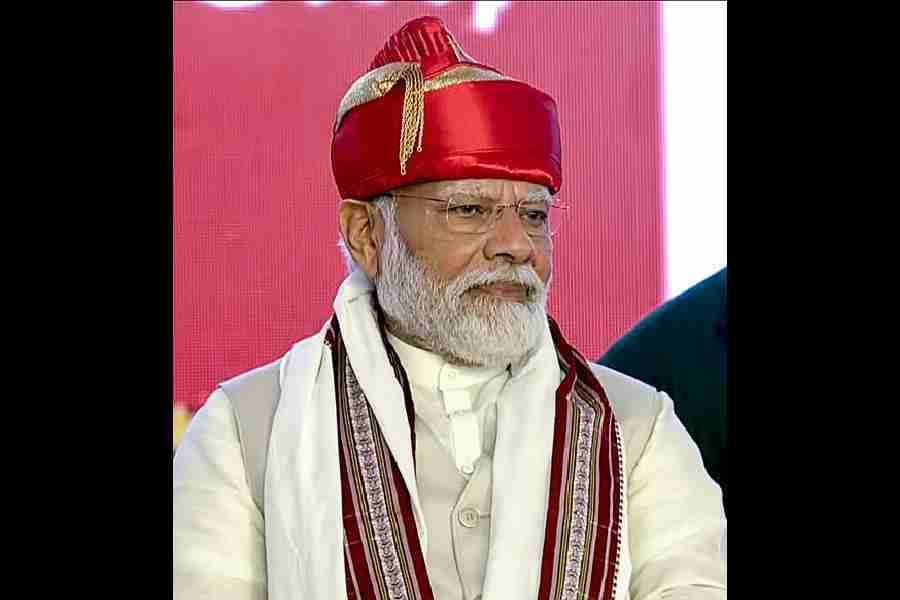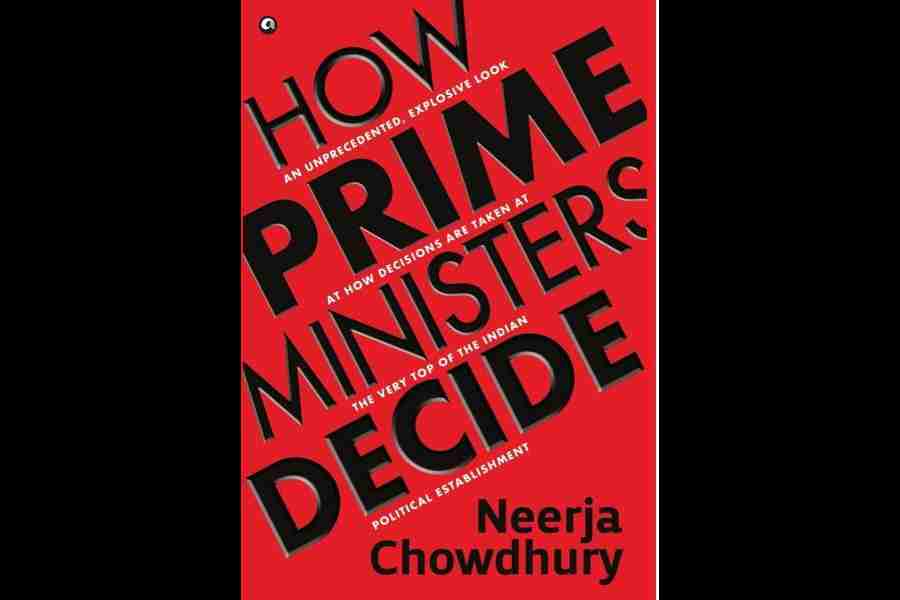
A primer: Prime Ministers of India, the pillars that symbolised India's diversity
A slice from journalist Neerja Chowdhury’s insightful new book on how key decisions were taken
 |
| Indira Gandhi and Narendra Modi: PTI |
Neerja Chowdhury, TT, 13.08.23 : Once they occupy the hot seat, prime ministers are supposed to represent the whole country, irrespective of the region, caste, or community they come from. It is, however, instructive to look at the social background of India’s prime ministers to see if this tells us anything about the deepening, or otherwise, of India’s democracy. Representing different backgrounds — elite and rustic, North and South, minority and majority, Brahmin and backward, man and woman — India’s prime ministers have symbolised India’s incredible diversity.
Six of the fifteen prime ministers were Brahmins, at the top of the social ladder (Jawaharlal Nehru, Indira Gandhi, Morarji Desai, Rajiv Gandhi, though he was a half Brahmin from the mother’s side, Narasimha Rao, and Atal Bihari Vajpayee). V.P. Singh and Chandra Shekhar were Rajputs, Shastri a Kayastha, and Gulzari Lal Nanda and I.K. Gujral were Punjabi Khatris — all upper castes.
Two were from politically powerful peasant castes (and Shudras) — Charan Singh, a Jat, and H.D. Deve Gowda, a Vokkaliga. Though a powerful and prosperous farmers’ leader, Charan Singh’s angst about what it meant not to belong to an upper caste was unconcealed. “I am... born in a Jat family. A Muslim I can become... But I cannot become a Brahmin... a Rajput... nor... a Vaishya,” he had said in 1977. “And if I want to become a Harijan, even that is impossible, because the Constitution does not permit it.”
There has been no Dalit, or Muslim, or tribal, or Christian — as yet — to sit in the PM’s chair. But clearly, communities which were on the margins of society have been moving centre stage and ascending the power structure.
While three of the Indian PMs were from Punjab (Gulzari Lal Nanda, Inder Kumar Gujral, and Manmohan Singh) in the North, two from Gujarat (Morarji Desai and Narendra Modi) in the West, two from the South (H.D. Deve Gowda and P.V. Narasimha Rao), there has been none from eastern or Northeast India so far. As many as eight out of the fourteen PMs were from Uttar Pradesh — Nehru, Shastri, Indira Gandhi, Charan Singh, Rajiv Gandhi, V.P. Singh, Chandra Shekhar, and Atal Bihari Vajpayee (whose family was originally from UP, settled in Madhya Pradesh,
but he contested several elections from Lucknow).
Being the largest state, Uttar Pradesh (UP) has played a dominant role in Indian politics. The decline of the Congress became irreversible because of its inability to revive in UP. The BJP became a national player under Modi, winning a clear majority in 2014 and 2019, because it won the support of UP. In 2014, Modi himself shifted his constituency from Vadodara in Gujarat to Varanasi in UP.
This may sound incredible, but five out of fourteen of the PMs were from Allahabad — Nehru, Shastri, Indira, Rajiv, and VP, whose zamindari estate of Manda was very close to Allahabad. This was partly because Allahabad was a hub of the freedom struggle but also because it was home to the Nehrus who influenced the country’s politics for half a century and more after Independence..…The PM can control the entire system of governance through the appointments s/he makes — among others to the Central Bureau of Investigation (CBI), Central Vigilance Commission (CVC), Union Public Service Commission (UPSC), Comptroller and Auditor General of India (CAG), Election Commission of India (ECI), and Finance Commission.
 |
Prime Minister Narendra Modi being conferred with the Lokmanya Tilak National Award, in Pune, Tuesday, Aug. 1, 2023: pti |
The Constitution lays down, for instance, that the appointment of the Comptroller and Auditor General of India (under Article 148), the official auditor of the central government, shall be made by the president. But it does not say anything more about it. The president, who is bound by the advice of the cabinet, has to ultimately go by what the PM wants. This is also the case with appointments to other constitutional bodies like the UPSC which takes care of recruitment to the bureaucracy, and the ECI which ensures the conduct of free and fair elections.
The Appointments Committee of the Cabinet (ACC) is supposed to decide on all important appointments for constitutionally mandated statutory bodies like the governor of the Reserve Bank of India (RBI). “Actually it is the PM who makes the appointments,” Bhuvnesh Chaturvedi, who was minister of state (MoS) in Narasimha Rao’s PMO, used to say with his typical candour, “…the ACC gives retrospective effect to it.” For much of its existence, the ACC comprised the PM, home minister, and the minister of the relevant department. But after the Modi government came to power, only the prime minister and home minister remain on it.
The selection of the heads of the CVC and CBI is supposed to be a little different, thanks to guidelines framed at the instance of the Supreme Court in 1997. The CVC and CBI directors are supposed to be selected by a committee comprising the PM, the leader of the single largest Opposition party, and the chief justice of India (CJI). A panel of three names is put up to the committee. However, here too there are ways to ensure that the shortlisted names are all cleared by the PM first. Or the leader of the Opposition (LoP) and CJI are informally persuaded to go along with who the PM wants. Again, as Chaturvedi used to say, “At the informal level a lot of things are made possible.”
It is, however, the dull-sounding Ministry of Personnel, Public Grievances and Pensions that has been really crucial for every PM. Virtually every prime minister has chosen to retain control of this ministry. For it supervises the CBI, which is increasingly probing politically sensitive cases involving Opposition leaders — a sword that a PM can keep hanging over the heads of opponents. In May 2013, the Supreme Court had sharply indicted the UPA government by calling the CBI a “caged parrot” and “its master’s voice”, for misusing the top investigating agency in the allocation of coal field licences. While every government has tried to use the CBI against its opponents, the Modi government added the Enforcement Directorate (ED) as an additional instrument to use against its adversaries.
 |
| Book by Neerja Chowdhury |
An important part of the Ministry of Personnel, Public Grievances and Pensions is the Department of Personnel and Training (DoPT) which is responsible for All India Services like the Indian Administrative Service (IAS). The PM, as the minister in charge, can control the functioning of the entire bureaucracy, through transfers and postings. In the early years after Independence, the Home Ministry used to oversee the DoPT. After her sharp differences with her home minister, Y.B. Chavan, Indira Gandhi brought it under the PM’s control in 1970. This is when the PMO became all-powerful.

0 Response to " A primer: Prime Ministers of India, the pillars that symbolised India's diversity"
Post a Comment
Disclaimer Note:
The views expressed in the articles published here are solely those of the author and do not necessarily reflect the official policy, position, or perspective of Kalimpong News or KalimNews. Kalimpong News and KalimNews disclaim all liability for the published or posted articles, news, and information and assume no responsibility for the accuracy or validity of the content.
Kalimpong News is a non-profit online news platform managed by KalimNews and operated under the Kalimpong Press Club.
Comment Policy:
We encourage respectful and constructive discussions. Please ensure decency while commenting and register with your email ID to participate.
Note: only a member of this blog may post a comment.